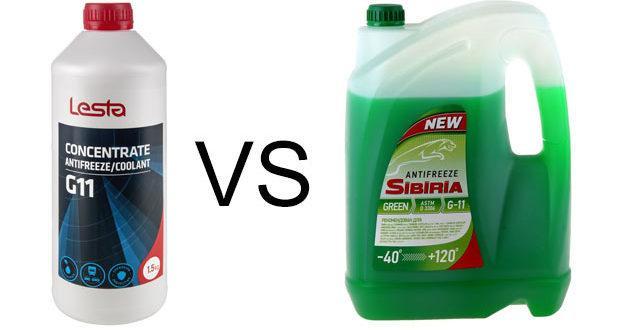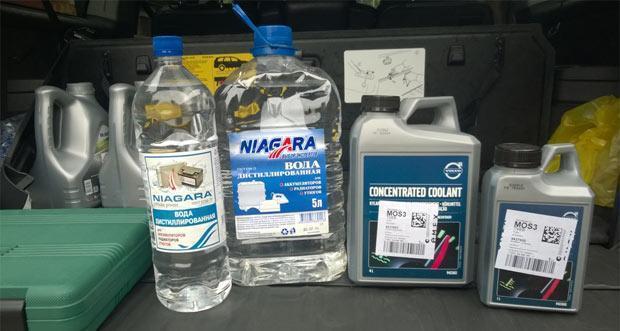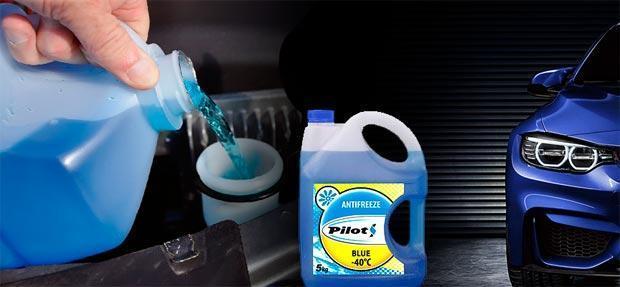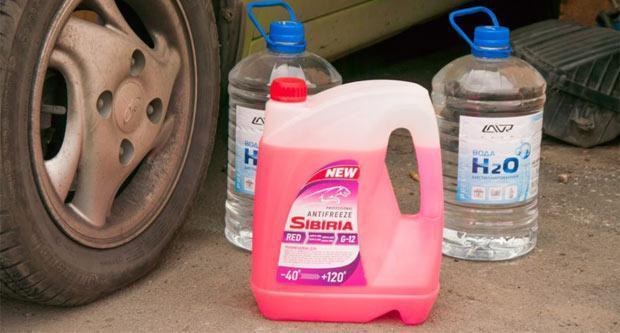
Concentrate or ready-made antifreeze. What's better?
Content
What does antifreeze concentrate consist of and how does it differ from the finished product?
The usual ready-to-use antifreeze consists of 4 main components:
- ethylene glycol;
- distilled water;
- additive package;
- dye.
The concentrate is missing only one of the components: distilled water. The remaining components in full composition are in concentrated versions of coolants. Sometimes manufacturers, in order to simplify and prevent unnecessary questions, simply write “Glycol” or “Ethandiol” on the packaging, which, in fact, is another name for ethylene glycol. Additives and dye are usually not mentioned.


However, in the vast majority of cases, all additive components and dye are present in all formulations produced by self-respecting manufacturers. And when water is added in the right proportion, the output will be ordinary antifreeze. Today on the market there are mainly concentrates of antifreezes G11 and G12 (and its derivatives, G12 + and G12 ++). G13 antifreeze is sold ready-made.
In the cheap segment, you can also find ordinary ethylene glycol, not enriched with additives. It should be used with caution, since this alcohol itself has a slight chemical aggression. And the absence of protective additives will not prevent the formation of a corrosion center or stop its spread. Which in the long run will reduce the life of the radiator and pipes, as well as increase the amount of oxides formed.


What is better antifreeze or antifreeze concentrate?
Above, we found out that in terms of chemical composition after the preparation of the concentrate, there will be practically no differences with the finished product. This is with the condition that the proportions will be observed.
Now consider the advantages of the concentrate over the finished composition.
- The possibility of preparing antifreeze with a freezing point that is optimally suited to the situation. Standard antifreezes are mainly rated for -25, -40 or -60 °C. If you prepare the coolant yourself, then you can choose the concentration just for the area in which the car is operated. And there is one subtle point here: the higher the low-temperature resistance of ethylene glycol antifreezes, the lower the resistance to boiling. For example, if antifreeze with a pour point of -60 ° C is poured for the southern region, then it will boil when heated locally to + 120 ° C. Such a threshold for "hot" motors with intensive driving is easily achieved. And by playing with the proportion, you can choose the optimal ratio of ethylene glycol and water. And the resulting coolant will not freeze in winter and will be resistant to high temperatures in summer.


- Accurate information about at what temperature the diluted antifreeze concentrate will freeze.
- Possibility to add distilled water or concentrate to the system to shift the pour point.
- Less likely to buy a fake. Concentrates are usually produced by eminent companies. And a superficial analysis of the market suggests that there are more fakes among ready-made antifreezes.
Among the disadvantages of self-preparation of antifreeze from a concentrate, one can note the need to search for distilled water (it is highly recommended not to use ordinary tap water) and the time spent on preparing the finished product.
Based on the foregoing, it is impossible to say unequivocally which is better, antifreeze or its concentrate. Each composition has its own advantages and disadvantages. And when choosing, you should proceed from your own preferences.


Watch this video on YouTube
